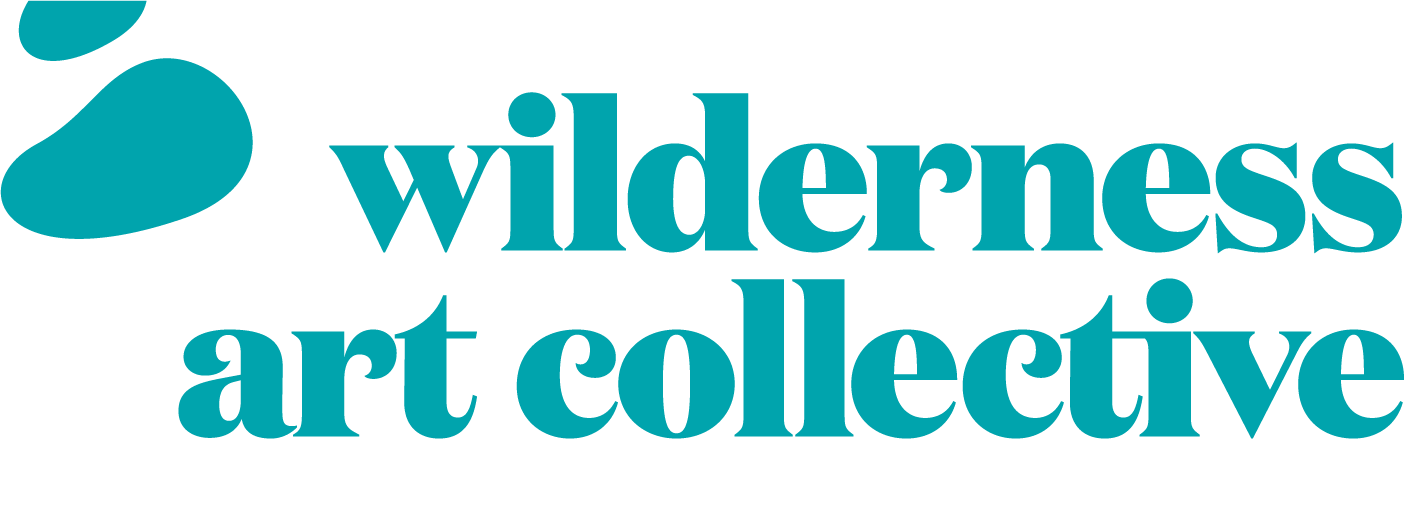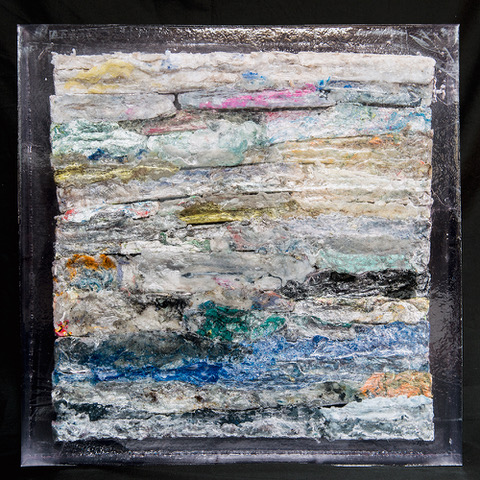Meet the Artist - Hannah Scott
Hannah Scott
by Peter Geraerts
Hannah on her epic cycle around New Zealand in 2019
I’ve often heard it said that an artist suffers for their art. In the case of Hannah, I would say that she has pushed the boundaries and gone the extra mile (or just under five thousand miles on a bike in this case).
When we spoke, Hannah had just returned from a four-and-a-half-month trip cycling around New Zealand. Prior to that she had spent a month onboard a container ship travelling from England to Malaysia on her journey there. This was preceded by three months cycling around a route linking a series of Amazon warehouses in the UK.
It was all part of a year-long project called ‘All This Stuff Is Killing Me’, the purpose of which was to reflect on the relationships between consumer culture, personal identity and environmental change. This included considering the ecological cost of consumer desires and expectations for more stuff, more convenience and ever more comfortable lifestyles.
The project began with an exhibition of the things that Hannah was going to take on her journey. The idea was to pare things down as much as possible - to only take the essentials. Apart from the practical considerations of only being able to take what she was able to transport on her bike; it was a deliberate contrast to the Amazon warehouse ‘cathedrals of consumption’ – I love that reference - where we believe we need more ‘things’ in our lives than we actually do. There was nothing particularly against Amazon but it stands out as somewhat of a beacon representing this ease and convenience, and the warehouse locations provided sufficient waypoints to mark out her journey around the UK.
Hannah also saw in this project a parallel between environmental loss and personal loss; in her case that of her parents. Cycling and sailing through changing landscapes and visiting places of personal significance around the UK and NZ she was able to confront grief by challenging her own identity, learning about her family history, connecting with the land and with her living and deceased relatives. Hannah was born and grew up in the south west of England. Her father was a Londoner who fought in North Africa, Malta and Italy during the Second World War. Her mother was born in Dunedin, New Zealand with family links there going back to mid nineteenth century settlers who had originally set sail from the UK to find a new life. Her grandfather also spent his life at sea in the Merchant Navy shipping goods around the world. It also represented a relatively low carbon footprint by cycling and taking the container ship.
As well as visiting various family members the trip around NZ gave Hannah the opportunity to break away from the more rigid structure and expectations of her lifestyle in the UK. The minimalist nature of the trip allowed her the freedom to decide what she wanted to do usually on the day she did it. There was little need for much pre planning with the exception of those times where specific arrangements had been made or when she needed to restock with food and water for a few days because of the remoteness of her route. With a degree of pleasure in her voice she said that she found this extremely liberating.
This gets more to the heart of how Hannah approaches her art. For her it’s about placing herself in the middle of something - she finds it more interesting to challenge herself rather than simply delivering a moralistic message. We are often on the receiving end of suggestions of what we should and shouldn’t do. Whilst they are mostly with the intention of the common good Hannah is very conscious, that none of us react that well to being told what you can and can’t do. It often helps to see something tangible to make us aware of the effect we have and can then make our own decisions from there. A quieter voice is needed.
Over many years she has become increasingly concerned with not only what we are doing to the planet but also how we are commercially dragged into making the problem worse. Whether it is the consumerism or the effects of consumerism with the plastic on the beaches here, in NZ or most other places around the world it is something tangible that we can all see and understand. You can read more about Hannah’s trip on her blog. A visual interpretation of this journey will be at The Wilderness Art Collective’s ‘Landlines’ exhibition at the RGS this September.
Hannah Scott - Single Uses
Something for me that I find particularly appealing is that Hannah’s art both references, and is backed up, by published scientific research. They aren’t projects of topics that she produces on a whim. They’re well thought out and it’s plain to see during our discussion that it’s obviously heartfelt. For example, in 2017, she created ‘270 Single Uses’ - an installation of ice casts of plastic bottles staged in Granary Square, Kings Cross, London. As well as referencing a number of scientific research papers she consulted with Imperial College London where they had developed a computer model, which mapped the path of plastic in the oceans. It predicted that most of the marine plastic pollution from the UK ends up in the Arctic taking less than two years to get there. Since the Arctic is warming twice as fast as the global average, large amounts of plastic are being released back into the oceans as the ice melts.
When Hannah first studied art as an undergraduate in 1997, she faced constraints primarily around funding that restricted her ability to produce the art that she wanted to. In 2015, she returned to study for an MA in Art and Science at Central Saint Martins, where she was able to commit with greater confidence and resources, and started to experiment with non-traditional mediums and installations. Whilst she does paint, photograph and produce film, it is primarily through the combination of many mediums that she prefers to work – experimenting with the most appropriate techniques, materials and artefacts to effectively communicate each narrative.
As her latest projects reinforce, Hannah isn’t shy in getting involved with the subject. In 2017 she was one of the artists in residence on a ship sailing off the coast of Svalbard, where she spent two weeks immersed within the Arctic environment. She collected daily atmospheric deposition samples on behalf of scientists at Kings College London in order to measure the concentration of plastic particles in the air, and with the help of her fellow artists, collected no end of fishing nets, boots and plastic in various forms on the beaches, which she used in her subsequent film and installation ‘Beach Clean’.
Hannah Scott - Beach Clean
Once again meeting Hannah demonstrates the way that the artists in the Wilderness Art Collective immerse themselves in their message. It’s a way of life and an ongoing consideration of issues that need to be highlighted, and which affect us all - it’s important that we are all made aware of the effects we have.
In parallel to the environmental message it shouldn’t be forgotten that Hannah creates beautiful pieces of art. Something quite unusual but no less beautiful is ‘Strata’, an experiment where she melted plastic bags and suspended the result in resin. I must admit that it wouldn’t be the first thing I would think of but then that is the skill and innovation of an artist.
Hannah Scott - Strata
What Hannah’s trip to New Zealand did was to reinforce the realisation to her, that we don’t need as many material possessions as we think we do. That has already manifested itself in beating a path from her house to the local charity shop and as the detail of the trip sinks in, I’m sure we’ll all look forward to seeing the artistic results that will undoubtedly follow.




